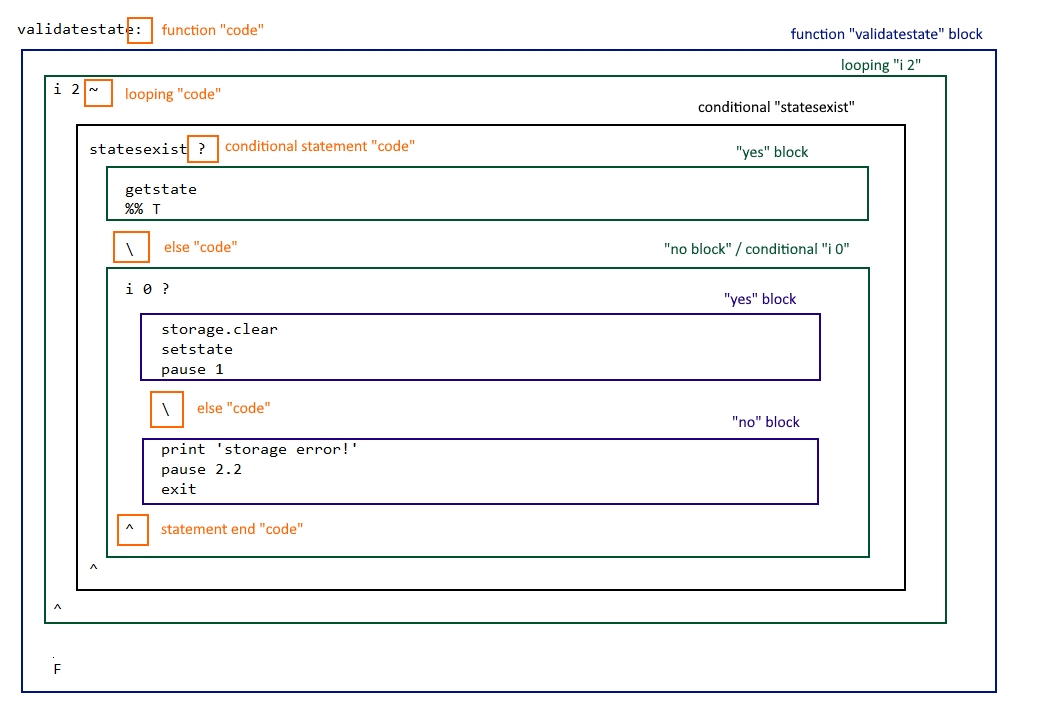Till does not have keywords (though it does have reserved words that can be found in directory “data” of the reference). If you are familiar with programming keywords like: if, else, foreach, function, in Till we use symbols instead.
In Till we write short character combinations of one or two characters (the “code”), that represent a keyword. Under the hood the system changes them to UNICODE symbols (the “symbol”) that eventually will be seen in Till Launcher.
Till system recognizes the codes as well as the symbols, so it is possible to work with symbolized program too and write code or symbol as you like. Usually it is convenient to just write the codes and let the system deal with them. All information about codes and symbols is in symbols table.
The most common codes in Till programming are function code “:” (symbol: “»”), conditional statement code “?” (symbol: “?”), looping & iterator code “~” (symbol: “~”), and statement end code “^” (symbol: “ᐤ”).
Coding with “codes” instead of keywords is very easy and intuitive, but care should be taken to implement statement structure correctly to avoid coding errors. Similar to languages like Visual Basic, multi-line statement structure components can be separated by code lines and terminated with “end” code. This is also emphasized by the fact that Till does not use curly braces to encompass code blocks.
This is an excerpt from Pi Calculator Project followed by code components scheme:
validatestate:
i 2 ~
statesexist ?
getstate
%% T
\
i 0 ?
storage.clear
setstate
pause 1
\
print 'storage error!'
pause 2.2
exit
^
^
^
F
